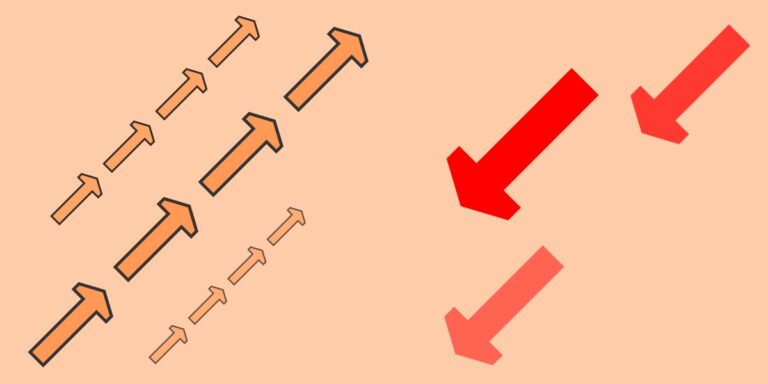Work can be overwhelming. Sometimes you may feel that there are way too many tasks to complete and that there are a million activities on your to-do list. Other times, it may feel a bit like a roller coaster – lulls when it feels not much can be accomplished, followed by bouts of many things needing to be done quickly.
These situations are especially common in scientific work, where you aren’t always in control of how experiments play out or when you will get feedback from colleagues on the next steps in a project. Scientists also face particularly unique challenges – you may need to review literature while juggling experiments and data analysis for your own work. You must plan well in advance to ensure you have instruments and equipment critical to your work. On top of all that, you’ve got to make it to meetings, seminars, lab talks, and professional development sessions. It can be a lot to juggle!
Time blocking is a really useful tool you can use to make work a little less daunting to accomplish. In fact, you are probably already time blocking to some degree. This article provides an overview of time blocking and how to use it effectively to increase productivity inside the lab and out.
What Is Time Blocking, and Why Can It Work for You?
Time blocking is exactly what it sounds like: taking your day and creating specific ‘blocks’ of time to accomplish tasks. While it may not seem intuitive, studies have shown that scheduling time and space to focus on a single activity dramatically increases productivity and reduces stress and anxiety.
What’s more, time blocking allows you to create a realistic picture of how you really spend your time. For instance, your PI might not realize that a certain experimental process takes a big chunk of time (maybe even a physically impossible amount of time!). If you keep good notes while time blocking you can better communicate to supervisors and peers how long your experiments actually take and get better at planning. An additional bonus of time tracking is that you can periodically reflect on your accomplishments!
It’s also a highly effective strategy for all kinds of personalities. If you tend to procrastinate, time blocking provides a sense of accountability to yourself. If you’re a perfectionist, having a strict window of time to finish a task may give you the nudge you need to consider an activity “good enough”. And in this day and age, time blocking creates opportunities to set your phone to silent, turn off email notifications, and direct your attention to the task at hand – something that almost everyone finds challenging.
Time blocking can be a particularly helpful practice in laboratory-based work since things often must occur in a specific sequence and progression. By planning ahead, you can ensure that all the equipment you need is available and might even be able to reserve some extra help at critical steps for large or complicated experiments.
How Do I Start Time Blocking?
Start off by creating a list of all the activities you’d like to accomplish in the upcoming week. A week is a great amount of time to plan out since day-to-day lists can cause you to lose sight of the big picture while month-to-month activities may change drastically as new results are obtained or projects evolve.
For example, maybe your to-do list for a given week looks something like this:
- Appointments
- Lunch with Jonie from Dr. Johnson’s lab – Tuesday or Wednesday
- Data Club – Wednesday at 3:30 pm
- Lab cleanup – Friday at 9 am
- Grab a coffee with Jared – sometime Tuesday afternoon
- Dentist appointment – Monday at 11:30 am
- Dr. Hossen’s seminar – Wednesday at 12 pm
- Flexible Activities:
- GFP protein purification
- Prepare subculture plates (Day 1)
- Grow in liquid culture (Day 2)
- Transfer to full-size vessel and induce protein production (Day 3)
- Pellet cells and freeze (Day 4)
- Lyse cells & purify GFP (Day 5)
- Prepare figure for PNAS paper draft
- Perform preventative maintenance on centrifuge
- Miniprep pMB1 plasmid for next week
- Make LB media
- Weekly literature review
- Finish presentation for lab meeting
- Order supplies for next week’s experiments
- GFP protein purification
First, block off appointments and give yourself plenty of time to get to/from meeting locations. Then, prioritize each task as you see fit. Some tasks are probably set in stone (like appointments) while others may be more flexible. Some tasks might even be dependent on one another. In the example above, protein purification requires several days of work that must be timed appropriately.
After you’ve decided what your top priorities are, decide when you want to accomplish them and block off time in a calendar. Don’t forget to take time for lunch and getting to/from meetings! Below is an example using Google Calendar, where appointments are in orange, critical tasks from the to-do list are shown in green, and fairly flexible activities or lower-priority are shown in yellow.
After you fill in most of your items, you might consider blocking out time for things like responding to emails, catching up on personal errands, and even for time blocking itself (quite meta but useful!). It’s that simple!
Bonus Tips to More Effectively Time Block
As you are time blocking, take into account when you feel most productive. For instance, whether or not you are a morning person may have a drastic impact on when you block time for heavy data analysis.
One of the most common challenges in planning is planning too much in a short period of time. Be realistic in your expectations and include buffer time between activities and blocks of time for lunch and leisure. If you’re lucky, you can successfully multitask during slow periods during an experiment– for example, the perfect time to get coffee with a colleague might be during a centrifuge spin.
To make time blocking work truly well in a busy laboratory, talk to your colleagues and propose an online scheduling system you can use to block time for various instruments, culture hoods, and rooms if they don’t already exist. That way, the entire group can plan out work and function smoothly without bumping into one another’s time.
There are a ton of tools available to start time blocking, ranging from simple digital calendars to intricate paper planners. To make time blocking more enjoyable and effective you can color-code projects or tasks like above!
To summarize, time blocking is an extremely helpful tool you can use if you’re feeling like there’s too much to manage in the lab and at home. Do you time block your lab work? Let us know in the comments below.







